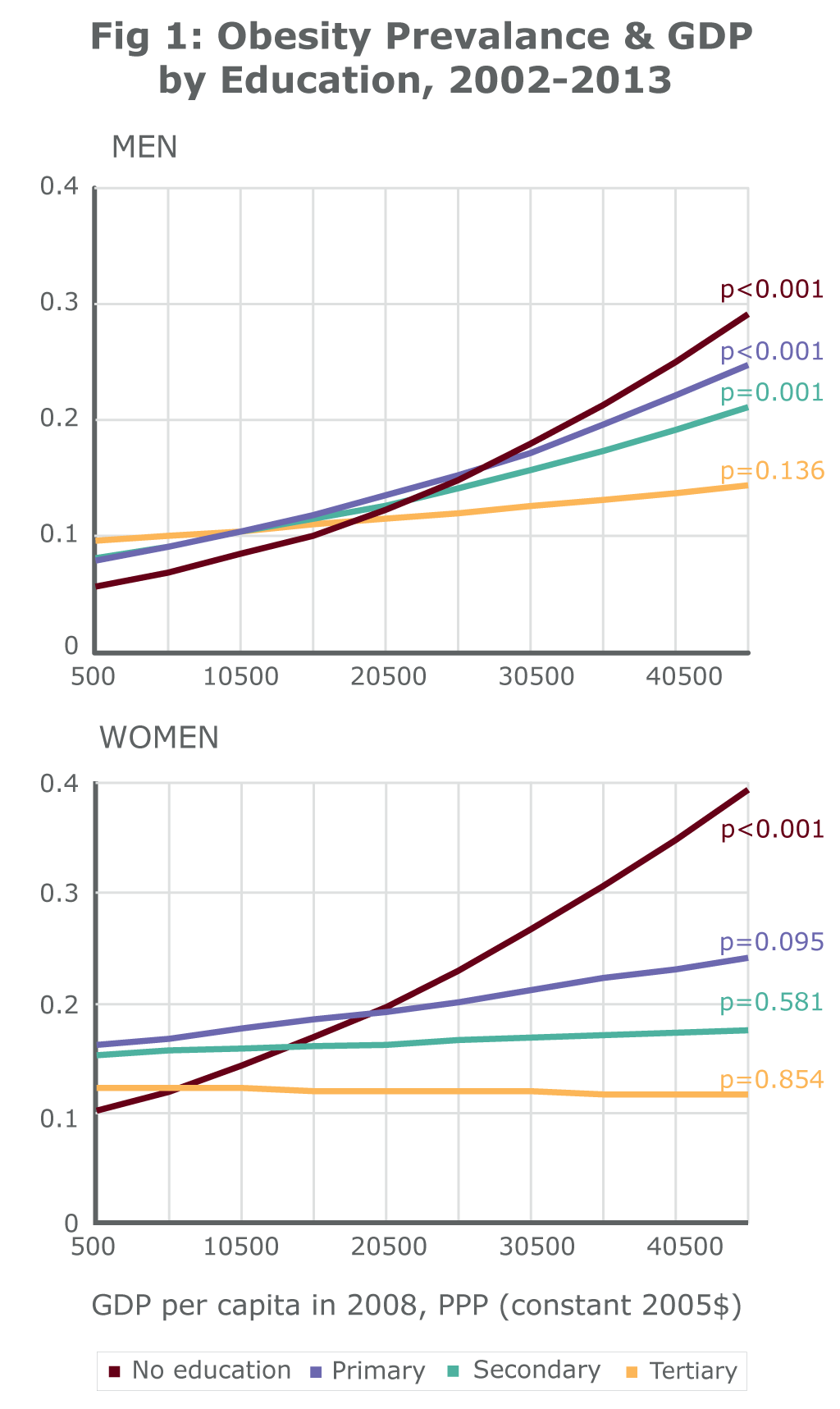Obesity and overweight is largely preventable, yet widespread around the world. They are particularly prevalent in richer countries. Since 1980, the global percentage of overweight adults has increased from around 30 to closer to 40. In Europe, the figure has reached 50.
Our study [1] suggests education could help. Data from 70 countries show that increasing GDP pushes up the prevalence of obesity among people with the lowest levels of education, but largely leaves the best educated alone (Figure 1). The data support the view of obesity as a social phenomenon. They suggest that, by improving health-related decision-making, investing in education already mitigates the health risks that accompanies economic development.

Source: [1], see below.
It’s important to note that the data are a cross section of now. This means we cannot determine, or at least test, exactly how economic development seems to affect obesity among the least educated without comparable data for many countries over time. We will also need a better understanding of the specific mechanisms by which education affects nutrition, activity levels, and other relevant health behaviours. Only then could we determine the strength of education’s preventative effect on obesity compared to other explanations.
Our findings nevertheless show a clear relationship between education and obesity, strengthening the argument that public health is more than a matter of the usual strategies to limit weight increase. Targeted interventions across many policy areas will be needed for both developing and advanced economies to meet the WHO’s 2025 obesity target. Education is likely to be a great place to start.
Vegard Skirbekk, Columbia University, USA & Norwegian Institute of Public Health, Norway
[1] Jonas Minet Kinge, Bjørn Heine Strand, Stein Emil Vollset, and Vegard Skirbekk (2015): Educational inequalities in obesity and gross domestic product: evidence from 70 countries. J Epidemiol Community Health, 69(12), 1141-1146.